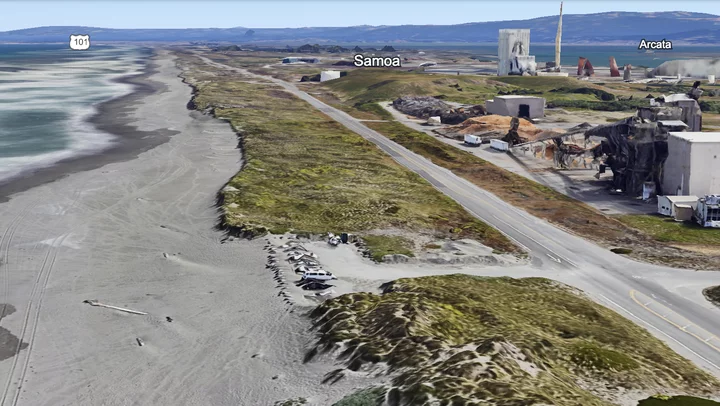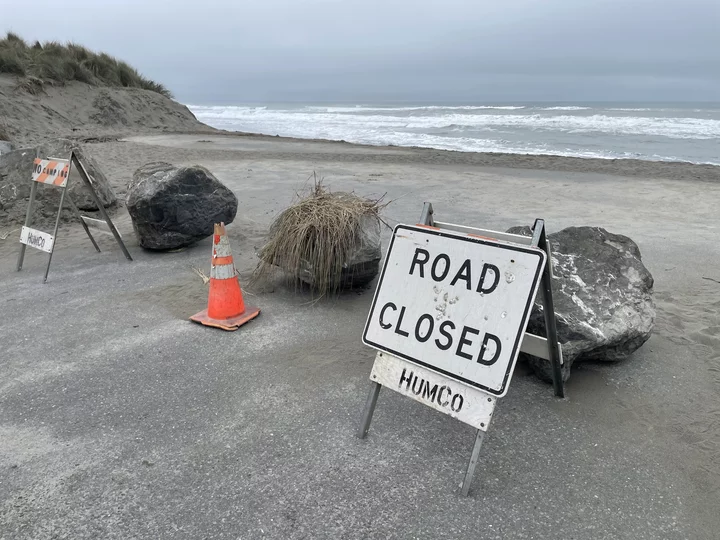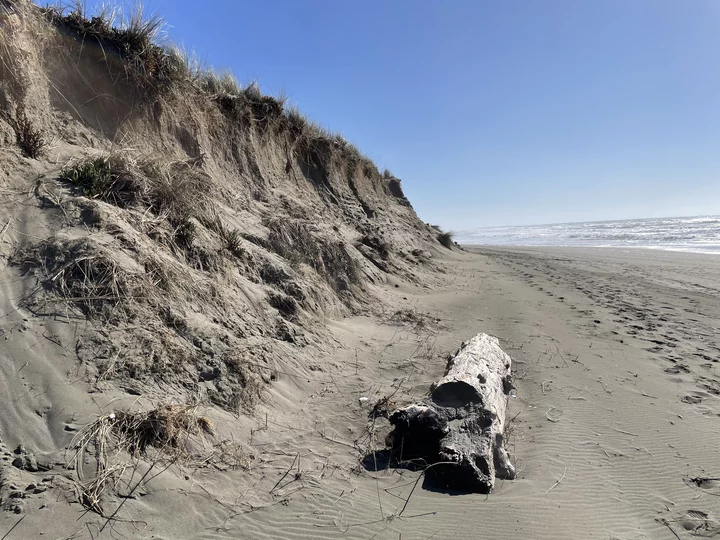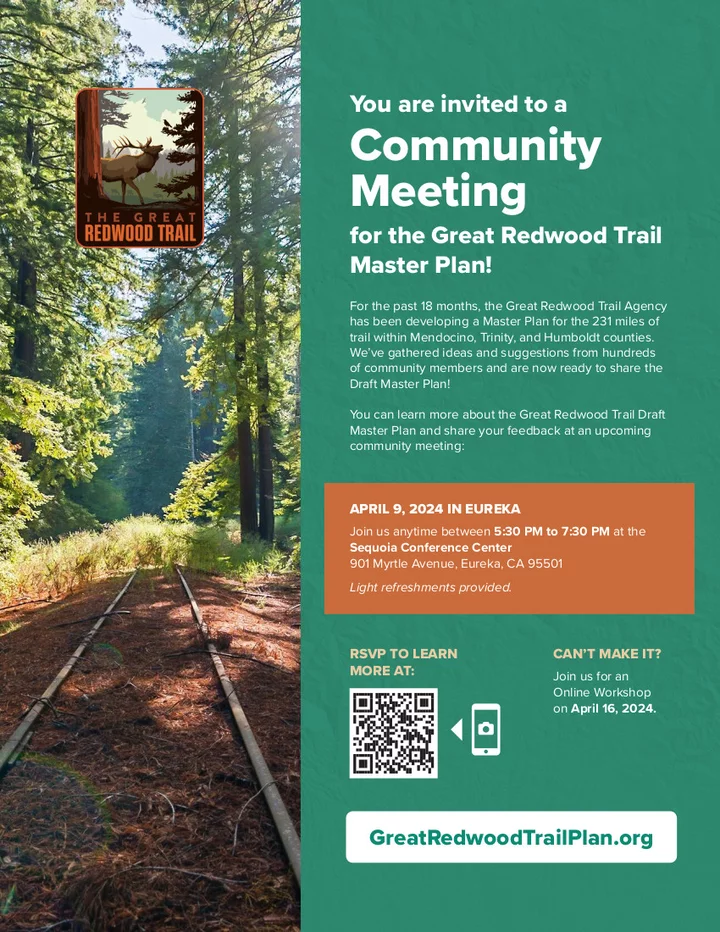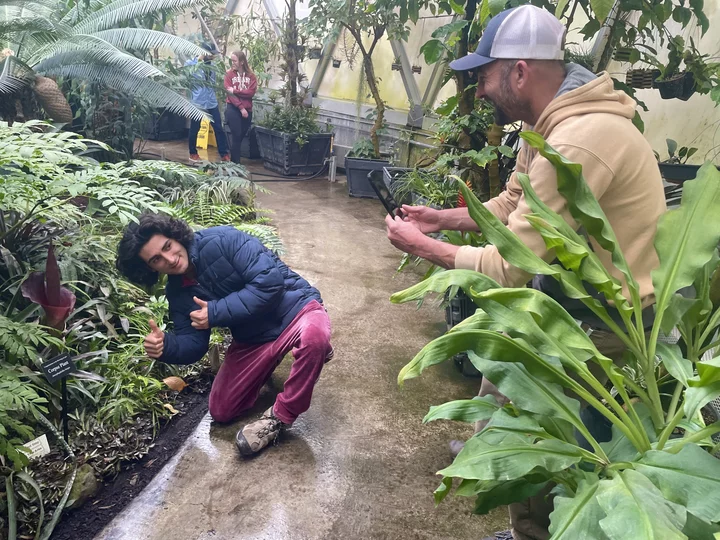Eureka Gym Owner Arrested for Allegedly Importing, Selling Black Market Chinese Testosterone, Drug Task Force Says
LoCO Staff / Thursday, April 4, 2024 @ 8:45 a.m. / Crime
Photos: HCDTF.
Press release from the Humboldt County Drug Task Force:
In late 2023, Humboldt County Drug Task Force (HCDTF) Agents began investigating local gym owner Tyler Johnathan PARR (37 years old from Eureka). PARR had been identified by HCDTF Agents as selling various forms of testosterone that had been illegally obtained from China.
On April 3, 2024, Agents served a search warrant on PARR’s residence in the 3300 block of G Street in Eureka. Agents located PARR as well as a useable amount of various forms of testosterone. PARR admitted to selling the various forms of testosterone and admitted to receiving it in the mail from China.
Tyler PARR was transported to the Humboldt County Correctional Facility where he was booked for HS11378- Possession of a Controlled Substance.
Anyone with information related to this investigation or other narcotics related crimes is encouraged to call the Humboldt County Drug Task Force at 707-267-9976.
BOOKED
Yesterday: 7 felonies, 9 misdemeanors, 0 infractions
JUDGED
Humboldt County Superior Court Calendar: Today
CHP REPORTS
0 Us101 N (HM office): Trfc Collision-Unkn Inj
0 Unnamed Street (UK office): Assist CT with Maintenance
2806 Mm199 (HM office): Traffic Hazard
Us101 N / Herrick Ave Ofr (HM office): Assist with Construction
ELSEWHERE
RHBB: Barnwell Continues 2025 Perfect Streak
RHBB: Wildfire near Covelo could burn hundreds of acres, evacuations underway
NCJ: Fatal Shooting of Suspect in Blue Lake Under Investigation
RHBB: Safeway Stores to Remain Open as Union Reaches Tentative Deal with Company
Dangerous Cliffs, Collapsed Parking Lots: How a Relentless Winter Changed Our Coastal Landscapes
Ryan Burns / Thursday, April 4, 2024 @ 7:30 a.m. / How ‘Bout That Weather
The parking lot at Bay Street on the Samoa Peninsula, often called simply “The T,” partially collapsed down a steep cliffside late last week. | Photos and video by Ryan Burns.
###
PREVIOUSLY:
- (VIDEO) Watch a Cliffside Near Centerville Beach Slide Into the Ocean
- EMERGENCY DECLARATION: Sheriff Honsal Seeks Outside Resources Due to Ongoing Fleener Creek/Centerville Landslide
A little over a month ago, during high tide, huge chunks of the bluff at Fleener Creek Overlook flaked off in powdery sheets, falling nearly 100 feet to Centerville Beach, where waves lapped at the accumulating mountains of fallen silt and dirt. The collapse, which took a big section of parking lot with it, sent people running, as seen in dramatic drone video. The county later declared a state of emergency.
On Friday, a smaller version of this natural drama took place at the Bay Street parking lot on the Samoa Peninsula. The pounding waves of high tide, which have been eating away at the dune slope to form temporary coastal cliffs up and down the peninsula, undercut the asphalt until a big sections fell onto the beach below.
In response, the County of Humboldt closed the popular parking spot, commonly called “the T,” and the Samoa Peninsula Fire District issued a public safety warning, urging people to urge extreme caution on all local beaches due to the steep and still-eroding banks.
Compare the image in the video above to the one below, showing what the beachside parking lot typically looks like:
The T parking lot at Bay Street.
###
What’s going on? Why have local beaches and coastal cliffs changed so much this year? Well, according to Troy Nicolini, meteorologist-in-charge at the Eureka office of the National Weather Service, the extraordinary erosion is the result of a particularly brutal wet season.
“It was a really unusual winter,” Nicolini said when reached by phone on Tuesday. “It’s been really long. We’ve had a really unusual cadence of storms. If you’ve lived here for long you may have felt it psychologically. We just didn’t get the breaks we often get for the winter.”
It’s typical for big waves to carve out local beaches during the winter, pulling sediment out into the surf zone where it forms shoals. The shoals help protect the beaches by causing waves to break farther offshore, Nicolini explained. And once the weather starts to turn — usually around this time of year — summertime wave patterns help rebuild the beaches, steadily moving that sand back into the beach zone.
Seasonal northwest winds help this process, blowing sand from the wet beach area onto the surface of coastal dunes, where it get gets trapped and accumulates. The pattern is cyclical, but this year’s El Niño climate pattern resulted in a much longer stretch of winter weather than usual, with successive storms battering the coast without much reprieve.
“I mean, we feel it in our staff,” Nicolini said. “Like, our staff is worn out. We work overtime during the storms, and normally we get a break to sort of dust ourselves off. The beaches are the same way: They haven’t had a break.”
The parking lot at Bay Street is currently closed.
The damage won’t be cheap or easy to repair, either. Humboldt County Public Works Director Tom Mattson said county workers collaborated with personnel from the Peninsula Community Services District over the weekend to remove some of the bigger chunks of rock and asphalt from below the Bay Street parking lot. But access remains limited, and a long-term fix could take months or more.
“We’re struggling because that’s a parks facility and they have no funding,” Mattson said. The county is trying to dig its way out of a $12.4 million budget deficit. “And our general fund is hurting really bad right now,” Mattson said.
The Fleener Creek Overlook will be even more expensive and difficult to rebuild. Mattson said that cliff face has been eroding for more than 30 years, and this will be the second time in his tenure with the county that they’ve had to retreat away from the bluff, moving the parking lot and access road farther inland.
“The original road was about 150 feet west of where it is now,” Mattson said. “That’s how much is gone.”
The county has asked the state to provide geotechnical engineers and geologists to help come up with a longer-term solution for this challenging spot. A 2022 study by researchers at UC San Diego’s Scripps Institution of Oceanography found that Centerville Beach, five miles west of Ferndale, has a faster rate of erosion than anywhere else on the California coast.
Asked whether sea level rise is a contributing factor to this year’s exceptional rates of erosion, Nicolini said probably not. Ocean levels rise just millimeters per year. That’s true even around Humboldt Bay, where geologic subsidence accelerates the effect. (According to the California Ocean Protection Council, sea level around the bay is expected to rise by as much as a foot above its 2000 level by 2030 and as much as three feet by 2060.)
[CLARIFICATION: As Nicolini notes in the comments below: “[S]ea level rise certainly contributes to long term erosion trends. It just doesn’t explain the difference between the significant erosion we are seeing this year, compared to last year, for example.”]
What’s harder to calculate are the effects of climate change.
“That’s the real challenge for climate scientists,” Nicolini said. As climate change continues to warm the planet, scientists say weather variability will increase. Storms will get more intense. Warming oceans may change wave behavior. Past precedent will become less reliable as a predictor of future weather, and here in Humboldt County, this year has certainly been an outlier.
Nicolini has been working at the National Weather Services’ Eureka office for 26 years now and doesn’t remember a winter quite like the one we just had.
“I live in Fairhaven and I watch the beaches really closely,” he said. “And I’ve noticed there’s almost different signatures of how a storm interacts with the beaches. And in those 26 years, I’ve never seen a winter that had such a relentless cadence of storms … .
“Like, is this actually climate change? Or is it just normal variability of the climate we live in?” he continued. “These erosion events are pretty significant from a human perspective because they’re cutting into roads and areas that they don’t usually cut into, but every year they carve the beaches out, mostly from the wave behavior.”
Time will tell whether future years will bring a repeat of these big erosion events, but Nicolini said the important thing now is for people to be extra cautious while visiting local beaches — especially steep ones where they could potentially get trapped against the newly formed cliff faces at high tide.
“Places that people might have thought were safe are not safe right now,” Nicolini said. He urged people to be extra cautious until the local beaches rebuild and get back to their normal slopes.
A steep cliff along a beach on the Samoa Peninsula.
OBITUARY: Naomi Neil ‘Neil’ Ogimachi, 1925-2024
LoCO Staff / Thursday, April 4, 2024 @ 6:56 a.m. / Obits
Naomi Neil “Neil” Ogimachi died at his home in Eureka on March
28, 2024. He was born in Los Angeles in 1925, the fourth of five
children of Japanese immigrants.
He grew up during the Great Depression. Like many Americans, his family struggled through poverty, providing their living by picking vegetables in the fields and trucking them to market, which required he and his siblings to work in the fields. His family, along with others of Japanese ancestry, were incarcerated at Manzanar concentration camp in the California high desert. He graduated from Manzanar High School and was drafted by the United States Army and inducted in Manzanar in 1944. He trained at boot camp in Camp Hood, Texas and was deployed to the European Theatre. His military specialty was a “Survey and Instrument Man.” In Darmstadt, Germany, 19-year-old Sergeant Ogimachi spent five months in charge of the military police and prison office of Civilian Internment Enclosure 91 — a P.O.W. camp. 25,000 war criminals were detained in the camp, over half being Gestapo. He contemplated how ironic that he went from being guarded to being the guard.
After the war, he enrolled at U.C.L.A. on the G.I. bill. as a chemistry major. He found work at the China Lake Naval Station in California’s Mojave Desert, making explosive parts for nuclear weapons. While at China Lake, he was able to procure financing for graduate studies at U.C. Davis by working as a graduate teacher, eventually earning a Ph.D in organic chemistry from U.C. Berkeley. He found employment with the DuPont Company in Wilmington, Delaware where he met his future wife, Frances, or “Jean,” Bennett, a registered nurse, during a party. They had a brief engagement, were married in 1956 and moved back to California where he worked again at the China Lake Naval Station. He adopted her three-year-old boy, David, and they added a daughter, Catharine, or “Katie” in 1957 and a son Shawn, born in 1958 while living there.
After the deployment of Sputnik by the Soviet Union, the United States space program accelerated and scientists, including chemists, were in demand. Rocketdyne, the company that supplied all the major engines for the Saturn Rocket, which propelled the Apollo missions, employed him in 1959 through 1969. His work was primarily in the development in rocket oxidizers and was involved in several patents at Rocketdyne while living in suburban Canoga Park, California. In 1962, the couple added their second daughter, April. All four of his children went on to graduate with college degrees.
As the Apollo program was being phased-out, he found new employment and moved the family to Bogota, New Jersey, working as a chemist in nearby Hackensack. After five years, the family moved back to California, settling in the central coast beach town of Aptos. He commuted to Hollister and worked for Teledyne McCormick Selph until retirement in 1989.
While in retirement in Eureka, he served for many years as a Trustee of the United Methodist Church and volunteered building homes with “Habitat for Humanity.” He and his wife traveled extensively during retirement including cruises and tours to every continent and many countries in the world.
He was preceded in death by his wife of 66 years in marriage, Francis “Jean” Bennet in December 2022. He is survived by his two sons and two daughters, four grandchildren (Neil Ogimachi, Mindy Ogimachi, Andrew Jenner and Eleanor Jenner) and two great-grandchildren (Lyla and Rylan Ogimachi).
Services will be held at Oceanview Cemetery April 13, 2024 at 11 a.m.
###
The obituary above was submitted on behalf of Neil Ogimachi loved ones. The Lost Coast Outpost runs obituaries of Humboldt County residents at no charge. See guidelines here.
SPEAKING OF TIKTOK: Eureka Police Department Urges Our Dumb-Ass Youth to Resist the Call of the #DoorKickChallenge
LoCO Staff / Wednesday, April 3, 2024 @ 4:35 p.m. / Crime
Press release from the Eureka Police Department:
On Tuesday, April 2, 2024, at approximately 7:45PM, Officers with the Eureka Police Department were dispatched to the 3000 block of M Street on a report of 3 juvenile males having kicked and pounded on the front door of a residence, then ran away. Officers responded to the vicinity but were unable to locate juveniles. Surveillance footage was provided to the officers and forwarded to the School Resource Officer (SRO). On April 3, 2024, the juveniles were identified and contacted by the SRO and reprimanded for their actions. The SRO then contacted the parents of the juveniles and made them aware of their children’s disturbing behavior.
The Eureka Police Department became aware of a dangerous, viral social-media TikTok trend called “The Door Kick Challenge.” The prank encourages people to pound and kick on a door to a residence so it sounds like a home invasion. We believe this is what occurred during this incident.
The Eureka Police Department wants to bring this to the attention of the community and to let you know if this happens to you, please report it immediately. This behavior will not be tolerated. This trend is not only dangerous to those performing the challenge, it is also disturbing for our residents. This type of activity could potentially lead to criminal charges against the perpetrators.
Officers and neighbors said they’re worried about how people might react when they’re caught off guard in their own homes and believe someone might be attempting to break in and they feel the need to protect themselves. Police encourage parents to talk with their kids about this challenge and warn them of how dangerous it can be.
“This is a foolish and dangerous ‘Challenge’ for the youth of our community that could have severe consequences and potentially lead to someone getting injured or killed. It is not ‘funny’ and will not be tolerated in our community. I implore our youth to make better decisions, think about the impacts of your actions, and respect the quality of life of our community members. I also ask for the parents in our community to discuss the potential life altering impacts this could have for you and your children should something horrible occur. This isn’t like the old time Ding-Doing-Ditch prank, this prank may get you killed.” ~Chief Stephens
Despite Some Uncertainty and Pushback, Eureka City Council OKs Funding for Overlay Zone at Jacobs Campus
Isabella Vanderheiden / Wednesday, April 3, 2024 @ 3:36 p.m. / Local Government
The vacant Jacobs Campus in Eureka. File photo: Andrew Goff.
PREVIOUSLY: Eureka City Council Mulls Options for Jacobs Site
###
The City of Eureka is moving forward with a proposal that could influence future development at the former Jacobs Middle School Campus.
During last night’s regular meeting, the Eureka City Council voted 4-1, with Councilmember Renee Contreras-DeLoach dissenting, to direct staff to develop a “Mixed Neighborhood” overlay zone that would “add special requirements, limitations, or enhanced flexibility” on top of the base zoning designation of the Jacobs Campus. The overlay zone would provide design standards to ensure future residential or commercial development of the site fits in with the Highland Park neighborhood’s overall scale and character.
In simpler terms: The overlay zone, if approved, would prevent a developer from building something at the site that doesn’t match the rest of the neighborhood, like a high-rise apartment complex or a huge department store.
The push to control development at the long-disused school site comes about three months after the Eureka City Unified School District board of trustees unanimously voted to exchange the site to a mysterious private developer, known only as “AMG Communities-Jacobs, LLC,” for another small property and $5.35 million. The controversial land exchange, which has yet to be finalized, came about several months after the Citizens for a Better Eureka launched its “Housing for All and Downtown Vitality Initiative,” which would require the city to amend its General Plan to accommodate single- and multi-family housing on the Jacobs Campus.
The Jacobs Campus is currently zoned as “Public Facilities,” a designation that restricts land use to government facilities and schools. The Housing for All Initiative, if passed, would apply its own overlay zone that would authorize high- and low-density residential uses, public and quasi-public uses “compatible with a residential setting,” principally permitted commercial neighborhood-serving uses and uses allowed under the Downtown zoning designation.
During last night’s meeting, Development Services Director Cristin Kenyon noted that the initiative “doesn’t talk at all” about form and design standards for future development. “[The city’s] overlay would be focused on form, not use,” she said.
Contreras-DeLoach asked if the overlay would “prevent any of what the initiative is trying to do” and whether it would still allow for commercial uses.
“It would still allow the same uses,” Kenyon said. “[We’re] talking about what the buildings will look like, and the building could be occupied by any of those uses. … [There are], like, 100 uses that could be allowed under the initiative.”
The overlay zone could be applied to other Eureka neighborhoods. Kenyon emphasized that the proposal before council would be the first step in the development of the overlay zone. “We would develop an overlay and then we bring it to you to adopt into the code [but] it wouldn’t yet apply anywhere,” she said. “And then, separately, you could take an action to apply it in the future as you thought fit.”
At the council’s last meeting on March 19, Councilmember Scott Bauer expressed concern that the overlay project would get in the way of other important projects. During that discussion, Kenyon admitted that staff “was swamped” but said hiring a consultant to help develop the overlay would offer some relief.
Councilmember Kati Moulton returned to the issue and asked if staff had any other concerns about the overlay development process and potentially putting it in front of other projects.
“I don’t think staff could tell you specifically what this would delay or anything like that, but obviously putting this on there would be an additional workload for staff,” said City Manager Miles Slattery. “Things pop up all the time … . Emergencies happen and priorities get changed, but it’s up to council to determine what direction that staff [chooses].”
Bauer spoke in favor of the overlay but said he was “still torn” about taking staff away from other important projects. “I think this is a good idea, I really do,” he said. “But we have a lot of stuff on our plate and we’re adding another thing that might delay other things. I struggle with that, you know? I really want us to explore this but is this the [right] time?”
Councilmember Leslie Castellano said the overlay would serve as one more tool in the city’s toolbox.
“I think of an overlay as a tool [that] we don’t have thus far,” she said. “We use hammers all the time in our zoning code, but maybe we don’t have a really cool router for a special custom carpentry. … Sometimes we don’t need that router but every now and again, we’re gonna make a really cool cabinet with [it] that … has some cool regenerative community building component that we would have never had before. … That’s why I support it.”
During the public comment portion of the meeting, Eureka resident Thomas Stewart said “rezoning [the] Jacobs [Campus] without information from the developer [would be] improper.” Like many others, he speculated that Security National President and CEO Rob Arkley was behind the land exchange, although company founder Rob Arkley has denied any involvement. Stewart was so sure of himself that he put up a bet. [CORRECTION: Stewart did not specifically mention Arkley.]
“I will wager here tonight 10 Bitcoin,” he said, placing something on the podium. “If I’m wrong, you can keep them. If I’m right, please give them back to me. Any questions?”
Confused by the gesture, Eureka Mayor Kim Bergel called for a “point of order” and said the council could not accept his bet. “We appreciate that, but we can’t accept it,” she said.
After a bit of confusion and Stewart claiming he would be “a dead man” if he took the Bitcoin back, he admitted that they were fake and he had bought them on eBay for 10 bucks.
Michael Munson, one of the proponents of the Housing for All Initiative, asserted that the proposed overlay zone would conflict with the upcoming ballot initiative and urged the council to wait for the November General Election before taking any action on the matter.
“According to Election Code 9217, if the initiative were adopted, it would prohibit the city from adopting a General Plan or zoning [amendment] that would be in conflict with the initiative,” Munson said. “Also, the proposed overlay zone is purported to be exempt from CEQA [California Environmental Quality Act]. That’s not true either. … I think this is just a huge waste of money at this point.”
A section of the aforementioned section Election Code states, in part, “No ordinance that is either proposed by initiative petition and adopted by the vote of the legislative body of the city without submission to the voters, or adopted by the voters, shall be repealed or amended except by a vote of the people, unless provision is otherwise made in the original ordinance.”
City Attorney Autumn Luna did not address Munson’s claims directly but, at one point during the meeting, reiterated that staff was “simply asking council to authorize some money and some additional staff time” to look into the development of an overlay zone. “We are not changing the zoning code tonight.”
Luna did not respond to the Outpost’s immediate request for additional comment. We’ll update here if we hear back.
After a bit of additional discussion on the matter, Moulton made a motion to direct staff to hire a contractor for up to $40,000 to develop a “Mixed Neighborhood” overlay zone for the Jacobs Campus. The motion was seconded by Fernandez.
Before voting on the item, Contreras-DeLoach warned the council that she would be voting against the item because she wasn’t comfortable with the precedent that the overlay zone would set.
The motion was approved 4-1, with Contreras-DeLoach dissenting.
###
Other notable bits from the meeting:
- The city council unanimously approved a Memorandum of Understanding (MOU) between the city, Ink People Center for the Arts, Eureka Main Street and Wiyot Tribe for the recertification of the Eureka Cultural Arts District (ECAD). The ECAD is one of 14 cultural arts districts in California. The city was recently awarded $671,429 from the state to further local artistic endeavors. The funds will be disbursed over a five-year certification period.
- The city council also received an update on Eureka’s Capital Improvement Program. The council received an extremely thorough report from City Engineer Jesse Willor, who went over dozens of projects that have been completed in the last year, and dozens more that are in progress, including various road improvement projects.
The Great Redwood Trail Agency Has Unveiled Its Draft Master Plan, and it Has Some Big Dreams for Alderpoint, Among Other Things
Hank Sims / Wednesday, April 3, 2024 @ 3:35 p.m. / Tourism
A future Loleta, as transformed by the Great Redwood Trail and envisioned in the Great Redwood Trail Draft Master Plan.
Two and a half years after Gov. Gavin Newsom officially brought the Great Redwood Trail Agency to life, that state body today unveiled a first draft of its master plan – the document that will guide efforts to transform the old railroad line from Humboldt to Marin County into a continuous 300-mile hiking, biking and equestrian trail and, some hope, a major tourist attraction.
“We live in a big part of California,” writes state Sen. Mike McGuire in an introduction to the agency’s new, 586-page Draft Master Plan. “Big trees. Big skies. Big waves. And big dreams.”
“This is what the Great Redwood Trail is all about.”
The document amounts to a sort of giant to-do list for the entire project, or at least from the Mendocino-Sonoma County line north to Blue Lake. (The southern section of the trail is under the direct control of a different agency — Sonoma-Marin Area Transit, which runs commuter trains in those counties.)
It includes designs for possible amenities which might be located along the length of the trail, including welcome centers and bathrooms and campgrounds. It has drafts of the types of signage that will be installed. It calculates the annual economic benefit of the trail to be $102.5 million annually, and it breaks down that figure by jurisdiction. (Humboldt stands to gain $28.8 million in tourism revenue, it figures, and an additional $20 million in transportation and health benefits.)
Perhaps most importantly, the Draft Master Plan prioritizes action on certain sections of the trail. What sections should be built first? Which are most feasible to build, and which confer the most benefit? A few of those top-priority sections are here in Humboldt County, including an extension of the Humboldt Bay Trail all the way down to Scotia and up to Blue Lake.
Perhaps more surprisingly: The agency is also listing a stretch of the remote, geology-challenged Eel River Canyon — from Island Mountain to Alderpoint to Fort Seward — as a “Tier One” priority.
In this vision, Alderpoint — just half an hour from Garberville and Highway 101 — would serve as a hub for the very first nature-centric stretch of the Great Redwood Trail. Campgrounds and river access could be located on a 30-acre parcel just outside town that the Great Redwood Trail Agency owns. There would be possibility of “trail-oriented development including lodging, retail and dining opportunities.” And though much of this of the Eel River section of the trail would be unpaved, meaning unfriendly to cyclists, the Draft Plan envisions a possible bicycle loop trail between Alderpoint and Fort Seward, just downriver.
A future Fort Seward.
It doesn’t sound terribly like Alderpoint as it is, but at least some of the locals are pretty stoked. The Great Redwood Trail Agency’s press release about the Draft Master Plan quotes a couple of them:
Sterling Kercher, Alderpoint volunteer Fire Chief, logger, builder, and local landowner, said the trail is “a good thing for the community to give them the opportunity to make some money. It’s a community thing, to unite us and to bring people together.”
Equitable access to the Eel River Canyon and beyond is attractive to locals and visitors alike, including Shannon Stillwell, Alderpoint volunteer firefighter and multi-generational resident.
“How can we enjoy the Eel River Canyon if we can’t see it?” Stillwell asked. “Our waterways are God-given, and I want my grandkids to be able to hike up the canyon where their ancestors lived and enjoy the natural landscape.”
Elaine Hogan, the Great Redwood Trail Agency’s executive director, told the Outpost today that the Alderpoint-Fort Seward section of the trail scored high in the priority list for a few reasons. It’s close to major roads, it has less bridge and tunnel damage than other areas of the Eel River Canyon’s old train right of way, and the agency’s assets — including that 30-acre parcel and the old Fort Seward Depot, pictured above — could be redone as tourist attractions with relative ease.
Still, Hogan said, other “Tier One” areas, including the Humboldt Bay Trail extension, will likely get more attention, at least until partnerships or money can be found to take it on.
“[The draft plan] is a really fluid document, in terms of prioritization,” Hogan said.
The Great Redwood Trail Draft Master Plan is currently being circulated for public comment. If you have a laptop or a desktop computer, you should really download the thing and scroll through it. Here’s the direct link. It’s beautifully produced, and it thinks through an enormous range of questions regarding this ambitious project.
Comments on the plan are due June 3. Instructions on how to comment are available at this link.
And next week the agency will be hosting an open house on the Draft Master Plan at Eureka’s Sequoia Conference Center (901 Myrtle Ave.). It’ll be on Tuesday, April 9, from 5:30 p.m. to 7:30 p.m., and Hogan tells us there’ll be tons of exhibits and people on hand to explain things and take your questions.
Stinky, Phallic ‘Corpse Flower’ Blooms in Cal Poly Humboldt Greenhouse For the First Time in Three Years
Ryan Burns / Wednesday, April 3, 2024 @ 12:14 p.m. / Cal Poly Humboldt , Plants
Amorphophallus konjac, commonly known as the corpse flower or corpse plant, blooms in the Cal Poly Humboldt greenhouse. | Photos by Ryan Burns.
###
On Wednesday morning, students filed in, one or two at a time, to the humid air of the geodesic Dennis K. Walker Greenhouse on the campus of Cal Poly Humboldt Wednesday morning, excited to get a look and a whiff of the resident corpse flower (scientific name: Amorphophallus konjac) that has bloomed for the first time since 2021.
The flower — or, more precisely, the inflorescence, a stalk of many flowers — looked frankly excited, too. (Fun science fact: Amorphophallus comes from the ancient Greek for shapeless or deformed penis.)
A sour, earthy smell hits you as you enter the greenhouse, but some brave students were compelled to lean down, dipping their nose into the burgundy collar (or spathe) for a deep inhale of the rotting flesh aroma that gives this plant its name.
“Dead rat,” one student offered as a descriptor.
A Cal Poly Humboldt student poses for a photo with the pungent plant.
###
Native to warm, subtropical to tropical areas of southwest China, the Amorphophallus konjac can grow up to 36 inches wide, with the inflorescence growing as tall as six feet. The burgundy bloom currently up on campus has more modest proportions, but students were still impressed.
“The ones that really bring people in in droves … is the Amorphophallus titanum,” said assistant greenhouse manager Andy Goldman. “It’s gigantic.”
An excited student nearby said, “There’s one in San Diego; I missed that one, though.”
While the climate here in Humboldt County is quite different than this plant’s native environment, Goldman said he once saw an Amorphophallus konjac bloom in the backyard of his home in Cutten.
“Apparently the people that owned the house before us were big gardeners and they planted bulbs,” he said. “It was in a pretty specialized little spot — south-facing, next to the foundation of a garage so it stays nice and warm. But yeah, I’ve lived that for 20 years and I’d never seen in flower. It flowered seven or eight years ago and I haven’t seen it since.”
The corpse flower’s pungent smell serves a botanical purpose: attracting the dung beetles, carrion flies and other carnivorous insects that serve as its primary pollinators, who may be searching for a suitable site to lay their eggs.
“Once pollination is complete, the flower collapses, a process that takes only two to three days,” Cal Poly Humboldt explains on its website. For members of the public wishing to get a gander at this beauty, the greenhouse is open Tuesdays through Fridays from 10 a.m. to 2 p.m., though, again, the bloom won’t last for long.
To sum up: Its scientific name means “malformed penis,” it smells like death and it doesn’t last very long. And yet somehow it still manages to please people. Good for you, buddy.



